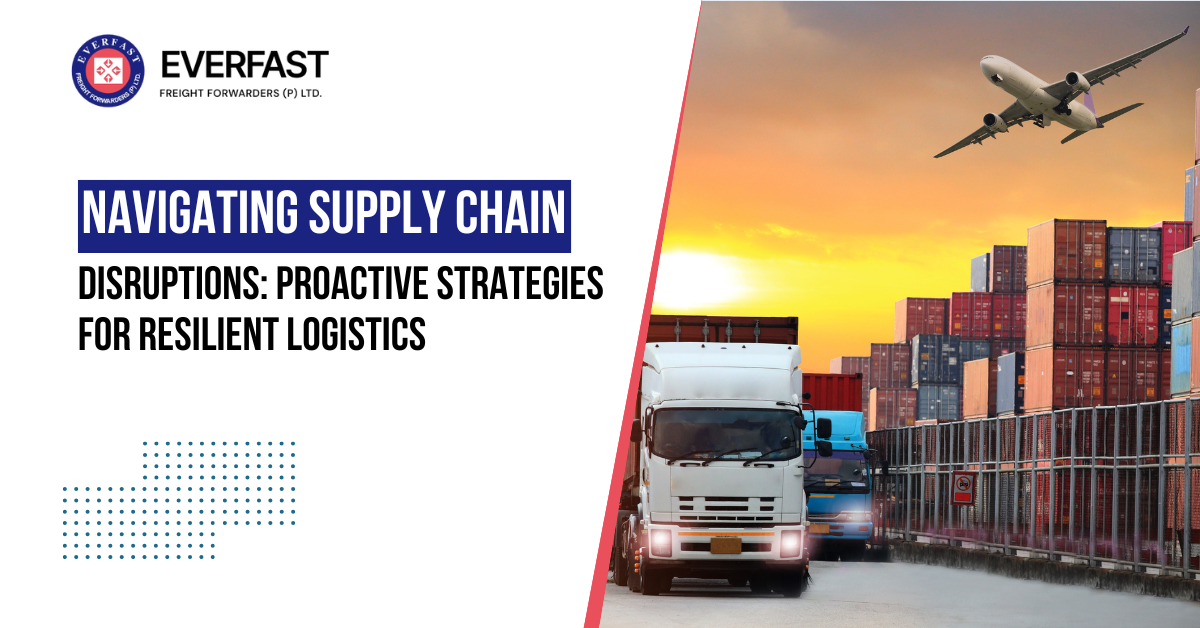
Navigating Supply Chain Disruptions: Proactive Strategies for Resilient Logistics
In today’s interconnected world, supply chain disruptions have become a frequent challenge for businesses. Natural disasters, geopolitical conflicts, pandemics, and cyberattacks can all disrupt operations, delay shipments, and increase costs. To stay competitive, companies must adopt proactive strategies that build resilience and ensure business continuity even during unexpected events.
Types of Supply Chain Disruptions
Supply chain disruptions typically fall into three categories:
- Demand Shocks: Sudden changes in consumer demand, such as panic buying or seasonal surges, can overwhelm supply chains.
- Supply Shocks: Factory closures, labor shortages, or raw material scarcity can make it difficult to meet demand.
- Logistical Shocks: Transportation delays, port congestion, and customs bottlenecks can disrupt the smooth flow of goods.
Each type requires a tailored response, but building a strong foundation of resilience helps mitigate the impact effectively.
Proactive Strategies for Building a Resilient Supply Chain
1. Diversify Supplier Networks
Relying too heavily on a single supplier or region leaves businesses vulnerable to unexpected disruptions. Expanding the supplier base across multiple regions reduces the risk of complete supply stoppages. Establishing relationships with alternate vendors allows companies to pivot quickly and avoid prolonged delays when issues arise.
2. Leverage Predictive Analytics
Data-driven insights powered by AI and machine learning can identify patterns and predict potential disruptions. Predictive analytics can forecast demand fluctuations, detect supply chain bottlenecks, and assess supplier performance. This foresight enables companies to take preemptive action and minimize risks before they escalate.
3. Strengthen Supplier Collaboration and Communication
Open communication and strong relationships with suppliers are critical during disruptions. Establishing clear channels for real-time data sharing fosters transparency and collaboration. This approach allows all stakeholders to work together, respond quickly, and address challenges as they emerge.
4. Invest in Digital Supply Chain Technologies
Technologies like IoT, blockchain, and RFID improve visibility and traceability across the supply chain. Real-time data on inventory levels, shipment status, and potential delays help businesses make informed decisions. Blockchain, in particular, provides tamper-proof records that increase trust and transparency throughout the supply chain.
5. Develop a Comprehensive Risk Management Plan
A well-defined risk management strategy includes identifying potential threats, assessing their impact, and preparing contingency plans. Regular stress tests and scenario planning help organizations gauge their readiness for various disruption scenarios. Being prepared for the worst ensures quicker recovery and minimizes operational downtime.
6. Optimize Inventory Management
Striking a balance between just-in-time (JIT) inventory and maintaining safety stock is essential. While JIT reduces storage costs, keeping a buffer stock of critical components ensures business continuity during supply chain interruptions. Advanced inventory management systems help optimize this balance effectively.
Conclusion: Strengthening Supply Chain Resilience
As global supply chains grow more complex, disruptions will remain a persistent challenge. Businesses that diversify suppliers, embrace technology, foster collaboration, and develop flexible inventory strategies will be better positioned to navigate uncertainties. By investing in proactive strategies, organizations can future-proof their supply chains, ensuring long-term success and operational continuity, even in the face of unforeseen challenges.
